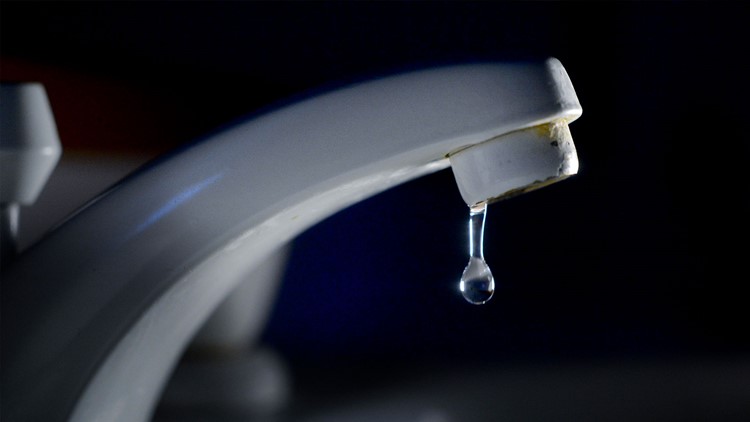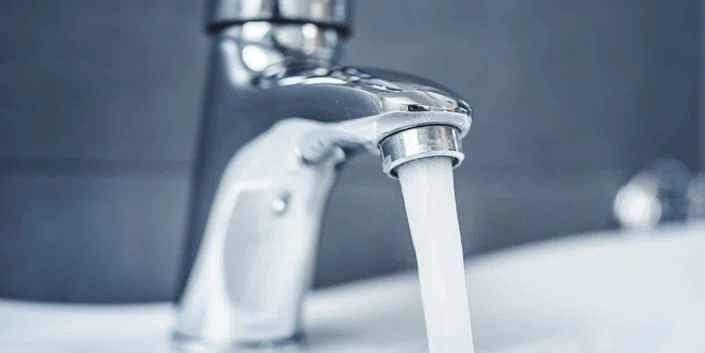Exploring the Effect of a Damaged Faucet
Exploring the Effect of a Damaged Faucet
Blog Article
Any individual will have their private ideas in relation to How to Fix a Leaky Faucet.

Introduction
A leaky faucet may feel like a small aggravation, yet its consequences prolong much past the periodic drip. Comprehending the impacts of a dripping faucet is critical for both property owners and the environment. In this post, we'll check out the numerous influences of this usual family issue and why resolving it quickly is vital.
Causes of Leaky Faucets
Leaking taps can arise from a variety of variables, consisting of wear and tear, high water pressure, and corrosion. Gradually, the continuous use faucets can lead to worn-out seals and gaskets, creating leakages to develop. In addition, excessive water pressure can place pressure on plumbing fixtures, causing leakages. Deterioration and corrosion can also deteriorate tap parts, making them susceptible to leak.
Water Wastage
Among one of the most substantial consequences of a dripping tap is water wastage. Also a small drip can amount to gallons of drainage gradually. This not only drives up water costs but additionally contributes to water shortage and environmental destruction. Dealing with dripping taps immediately is crucial for saving this priceless source and reducing its influence on the planet.
Financial Effect
Along with wasting water, leaking taps can also have a significant economic impact. Boosted water costs are a direct repercussion of water waste, costing homeowners hundreds of bucks every year. Furthermore, the expense of fixing water damages caused by leaks can be substantial, particularly if left neglected for an extensive period.
Ecological Effect
The environmental influence of leaking faucets extends beyond water waste. By conserving water, home owners can add to wider initiatives to alleviate water shortage and secure all-natural ecological communities. Sustainable alternatives such as rain harvesting and water-efficient fixtures can even more minimize the ecological footprint of house water usage.
Technological Solutions
Developments in modern technology have brought about the growth of smart faucets and water-saving tools that aid lessen water wastage. Smart taps use sensors to identify movement and change water circulation as necessary, decreasing waste without giving up ease. Water-saving tools such as aerators and low-flow showerheads are additionally efficient in saving water without endangering efficiency.
Global Perspectives
While leaky faucets may seem like a local concern, they contribute to wider global difficulties such as water deficiency and climate change. In areas currently encountering water stress, every drop counts, making leakage avoidance and repair work crucial. By adopting water-saving practices and buying sustainable technologies, property owners can play their part in addressing these pressing worldwide problems.
Governing Measures
Federal government laws play a critical duty in minimizing the influence of dripping faucets and advertising water conservation. From building codes that call for water-efficient fixtures to water-saving motivations and discounts, policymakers have a series of devices at their disposal. By implementing and imposing these policies, federal governments can ensure that homeowners prioritize water conservation in their day-to-days live.
Community Influence
Attending to leaky taps needs collective initiatives at the community degree. By raising recognition concerning the relevance of water preservation and offering resources for leak discovery and repair, regional authorities can encourage house owners to act. Initiatives such as water-saving refund programs and leakage detection projects can incentivize actions modification and promote accountable water usage.
Instance Studies
Real-life examples of the influence of leaky taps emphasize the significance of positive maintenance and timely repairs. From water damage to skyrocketing water expenses, the consequences of disregarding leakages can be serious. By sharing these case studies, property owners can better recognize the value of resolving leaking faucets promptly.
Educational Campaigns
Educational campaigns play a crucial function in increasing recognition concerning the effects of leaking faucets and promoting water preservation practices. Via workshops, seminars, and on the internet sources, house owners can find out exactly how to detect and repair leakages themselves. By encouraging people with expertise and devices, instructional campaigns can promote a society of liable water use within communities.
Health Issues
Leaking taps can develop conducive atmospheres for mold and mildew and mold growth, positioning health and wellness dangers to owners. The visibility of mold can exacerbate respiratory concerns and allergies, particularly in prone individuals. In addition, water damage arising from leakages can endanger the structural stability of buildings and result in expensive repair services.
DIY vs. Expert Repair
When faced with a leaking tap, house owners typically debate whether to try repairs themselves or employ an expert plumber. While do it yourself repair work can save money, they may not constantly deal with the hidden problem properly. Specialist plumbing technicians have the experience and equipment to identify and take care of leakages properly, guaranteeing long-lasting options and peace of mind for property owners.
Safety nets
Preventing leaking faucets calls for normal upkeep and positive procedures. Basic tasks such as changing damaged washers and seals can avoid leakages from developing. Additionally, upgrading to high-quality components and lowering water stress can help prolong the life expectancy of faucets and reduce the risk of leaks.
Verdict
In conclusion, the results of a leaking faucet expand much beyond the occasional drip. From water waste and boosted water bills to health concerns and ecological effect, the consequences of disregarding leaks can be substantial. By attending to leaking faucets promptly and taking on water-saving methods, house owners can alleviate these effects and add to a more lasting future.
Why You Shouldn’t Ignore a Leaky Faucet in Your Home
What Causes a Leaky Faucet?
Various factors can cause a leak, from loose and worn-out parts to corrosion. Your faucet has four essential components from which most plumbing issues will stem: the O-ring, the valve seat, the washer and the gasket.
What Is an O-Ring?
The O-ring is a stem screw that fastens parts of the faucet in place, preventing water from leaking out of the spout. Depending on your faucet type, the stem might have multiple O-rings. Water will drip from the faucet’s handles and base if this part breaks or deteriorates.
What Is a Valve Seat?
The valve seat controls the flow and temperature of the water. Found at the base of the handle, it works as a seal for the faucet’s stem. The valve seat ensures the water is allowed to flow or is blocked as the handles dictate. You’ll know it’s malfunctioning when water leaks from your faucet’s sides.
What Is a Gasket?
The gasket is found between the water inlet and the valve stem. It creates a seal between the faucet and the sink, holding its joints by aerators attached to the stem’s head. Water will trickle out from the base if the gasket isn’t working.
What Is a Washer?
The washer secures the handles and prevents leakage, serving a similar purpose to the O-ring. While the O-ring is ordinarily round and made from an elastic material, such as rubber, the washer is square-shaped and composed of brass, copper and other hard metals. If it malfunctions, corrodes or has been improperly installed, water will leak out of the handles, causing that incessant faucet drip.
Why Is a Leaky Faucet Dangerous?
A leaky faucet left alone for too long can have significant consequences.
Pest Infestations
Since bugs and rodents gravitate towards the scent of water, a leaky faucet will draw pests to your sink. Both are looking for leaks accessible through crawl spaces, which a faucet provides. If you leave water dripping for too long, you run the risk of an infestation.
Rust
If one of the faucet parts has started to corrode, the resulting rust can spread to your pipes and valves with startling speed. The rust might even lead to cracks or other impairments, resulting in more severe plumbing issues.
Your sink could also sustain damage from a leaky faucet. The water in your tap possesses sparse elements of calcium and iron that can stain your sink with repeated and prolonged exposure. Once those elements in the water have been open to the air for some time, your sink will start to rust, creating marks that can be difficult to remove.
https://www.tomsmechanical.com/blog/why-you-shouldnt-ignore-a-leaky-faucet-in-your-home

We had been made aware of that editorial on Health Risks Posed by Leaking Faucets through a buddy on a different web property. Liked our blog posting? Please share it. Help somebody else locate it. I thank you for your readership.
Report this page